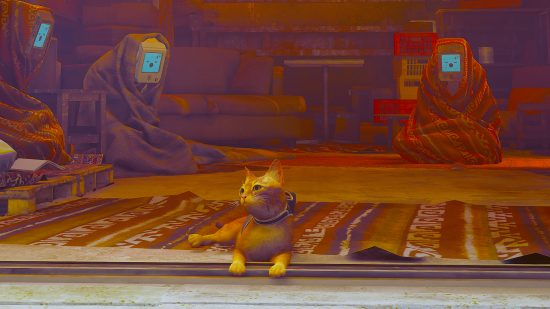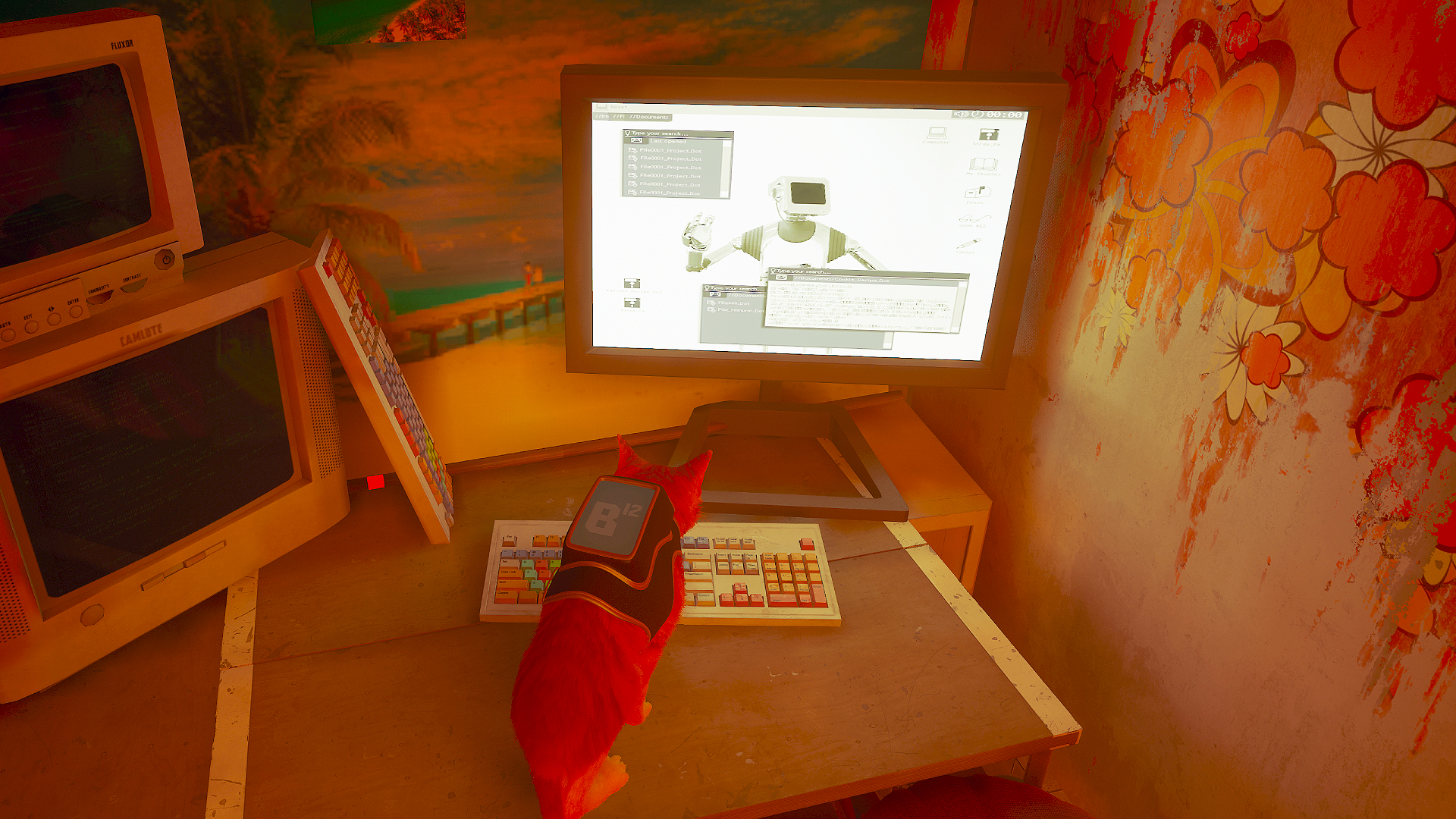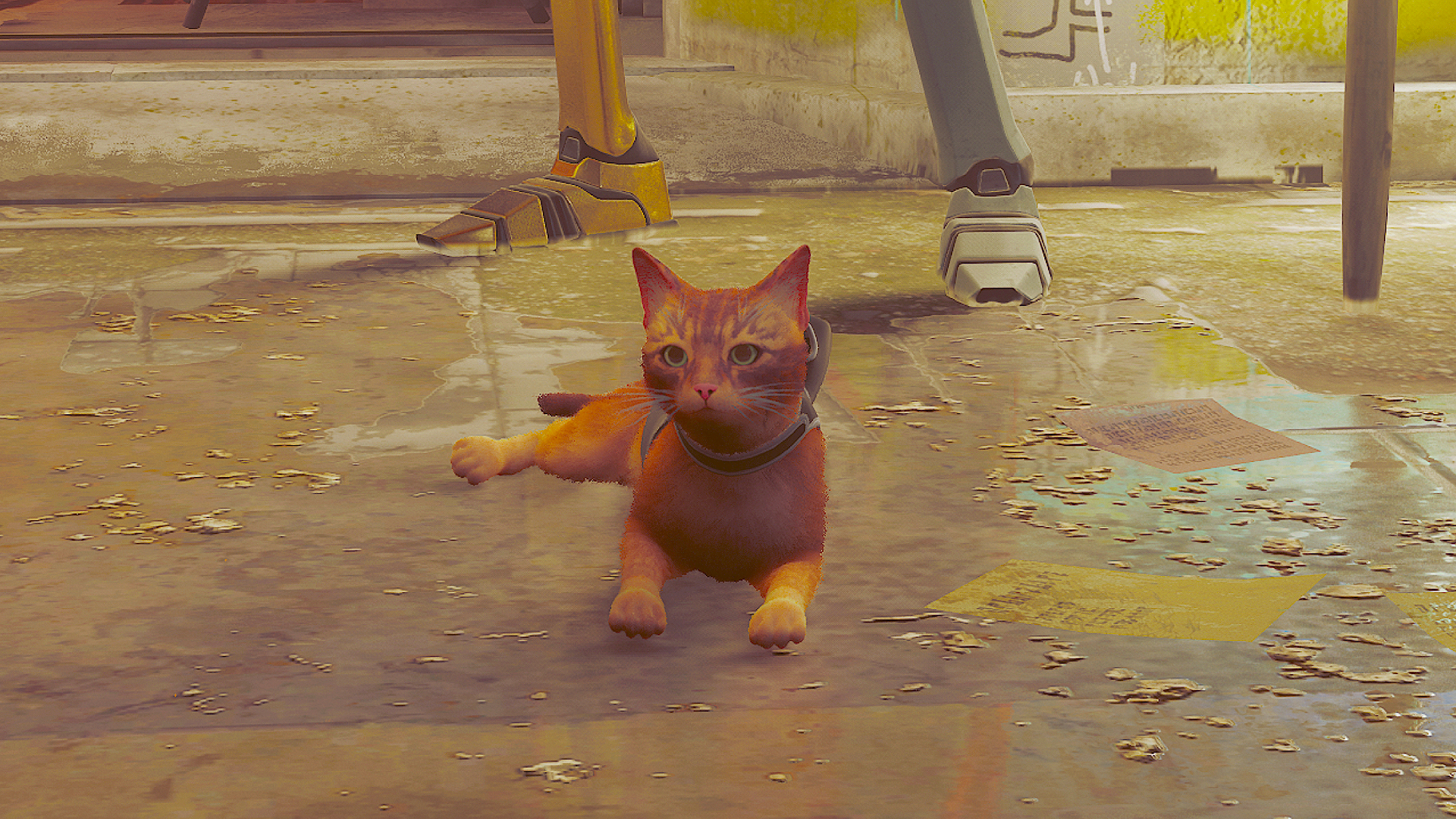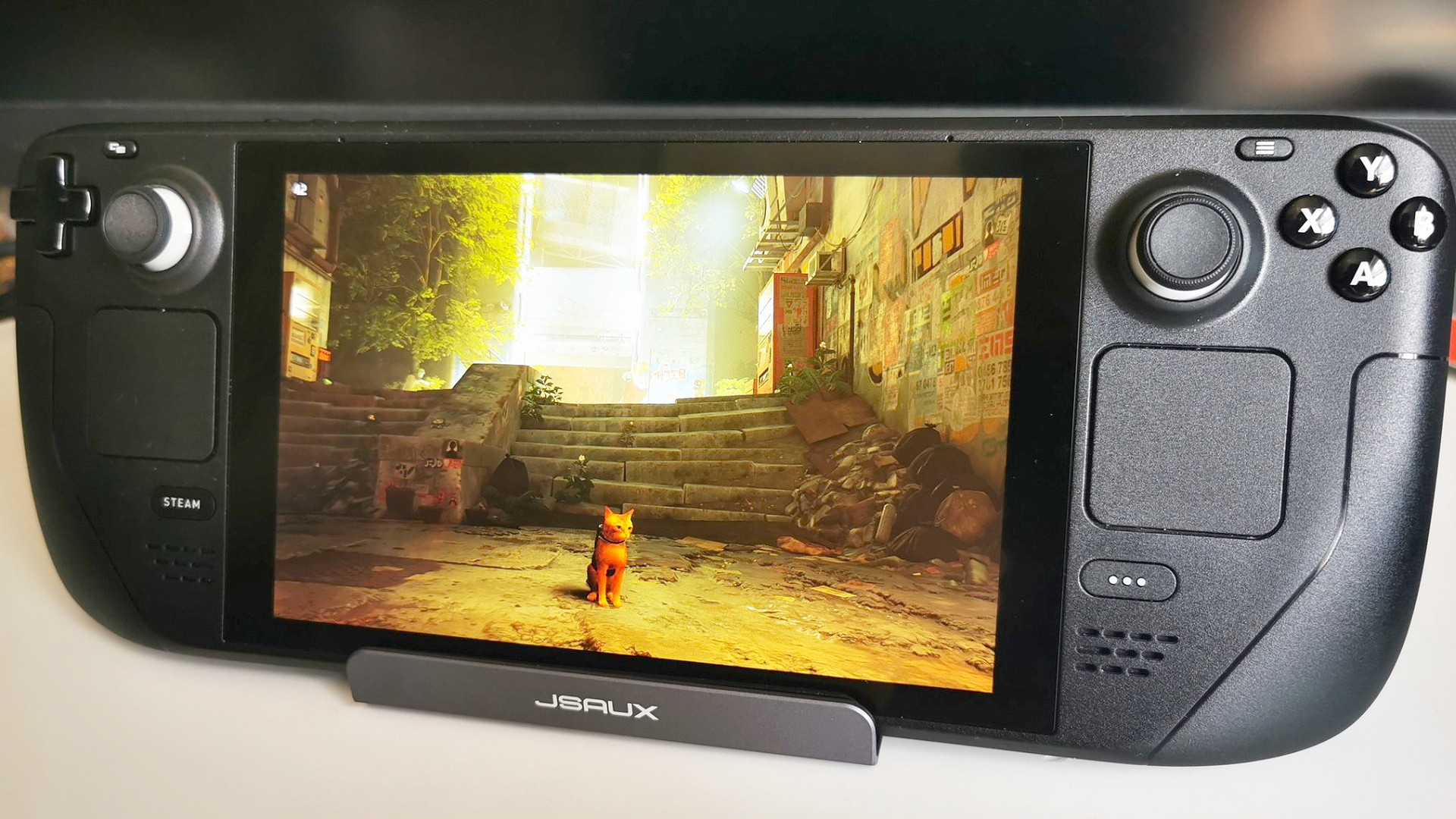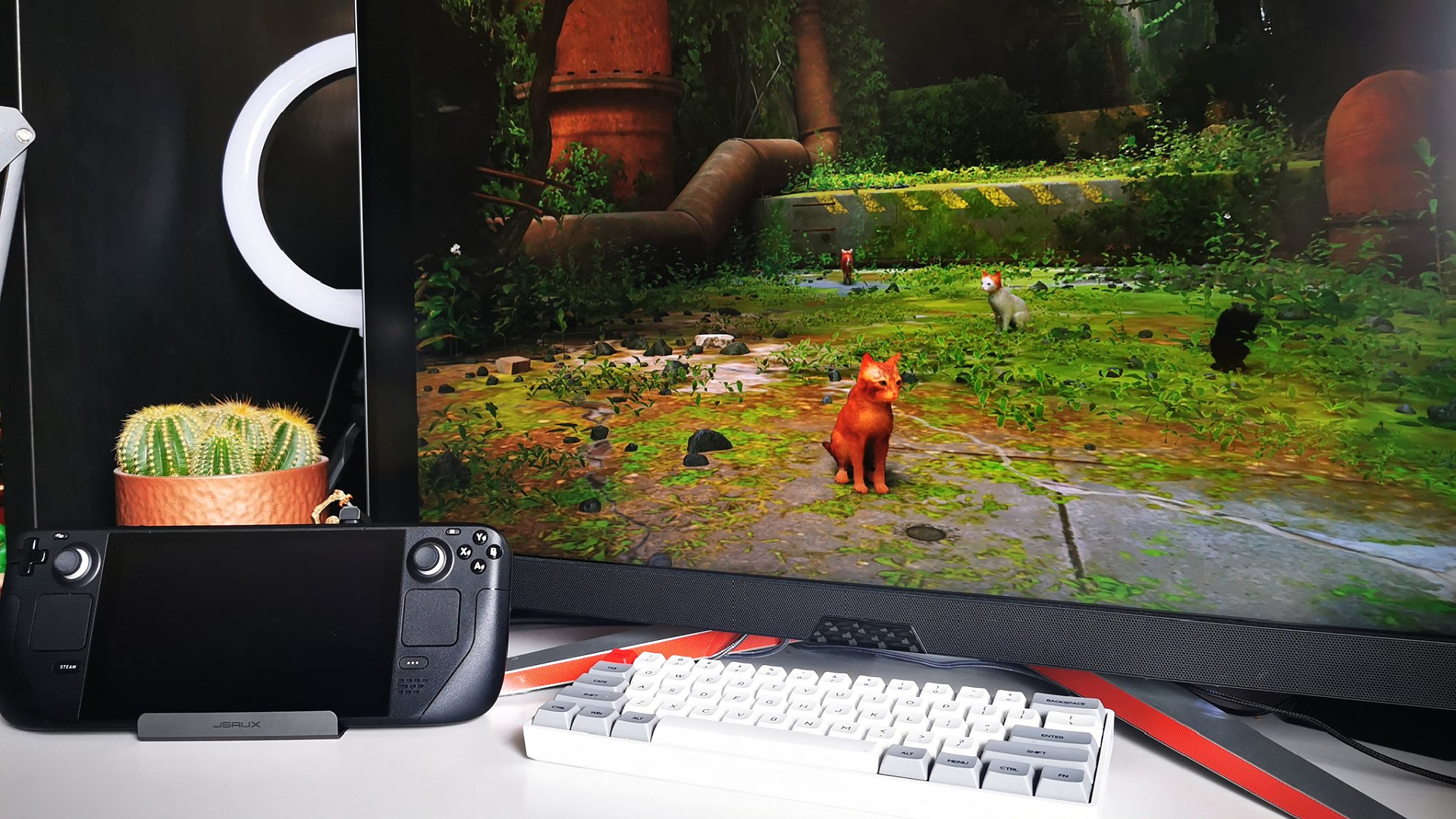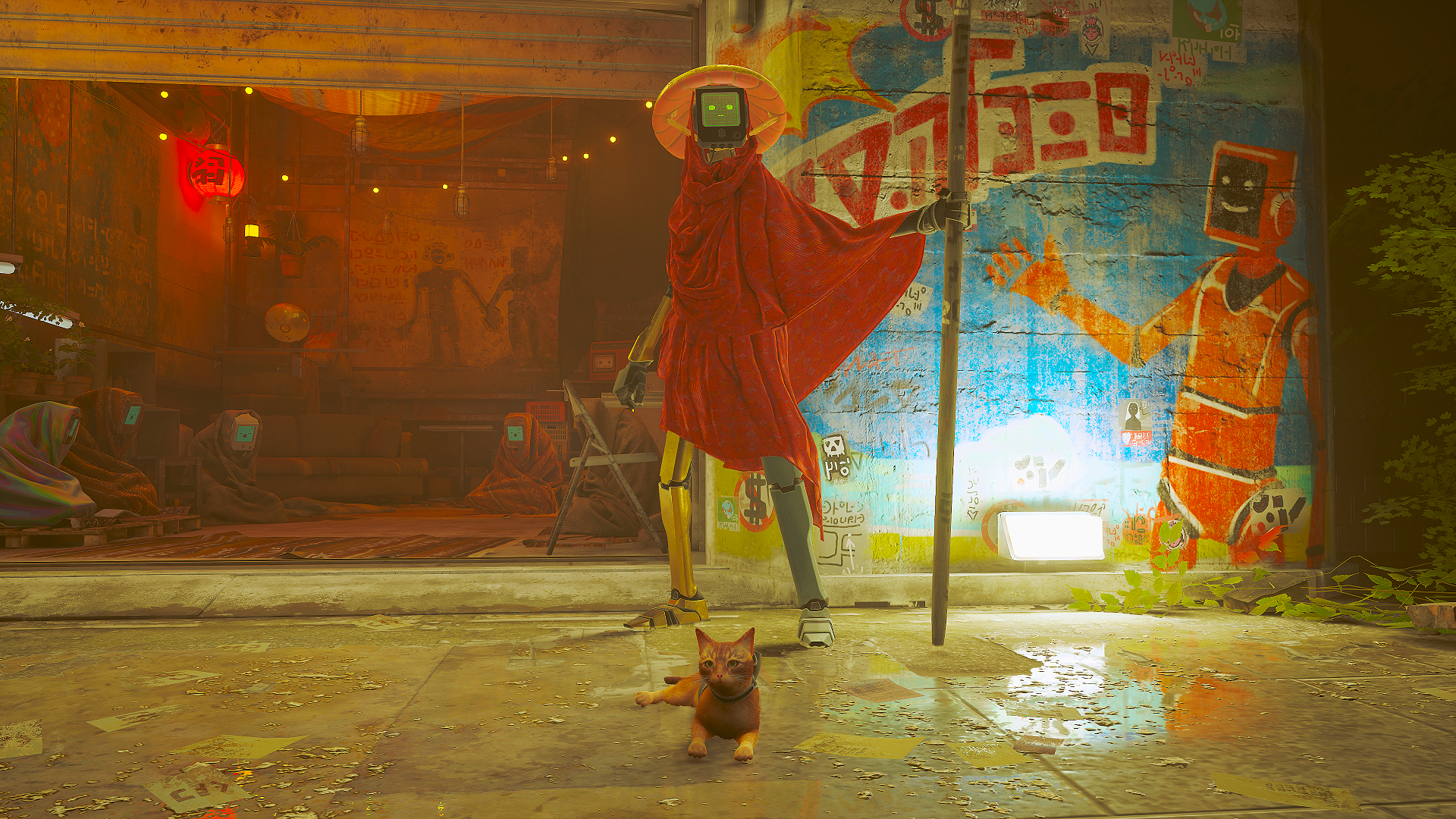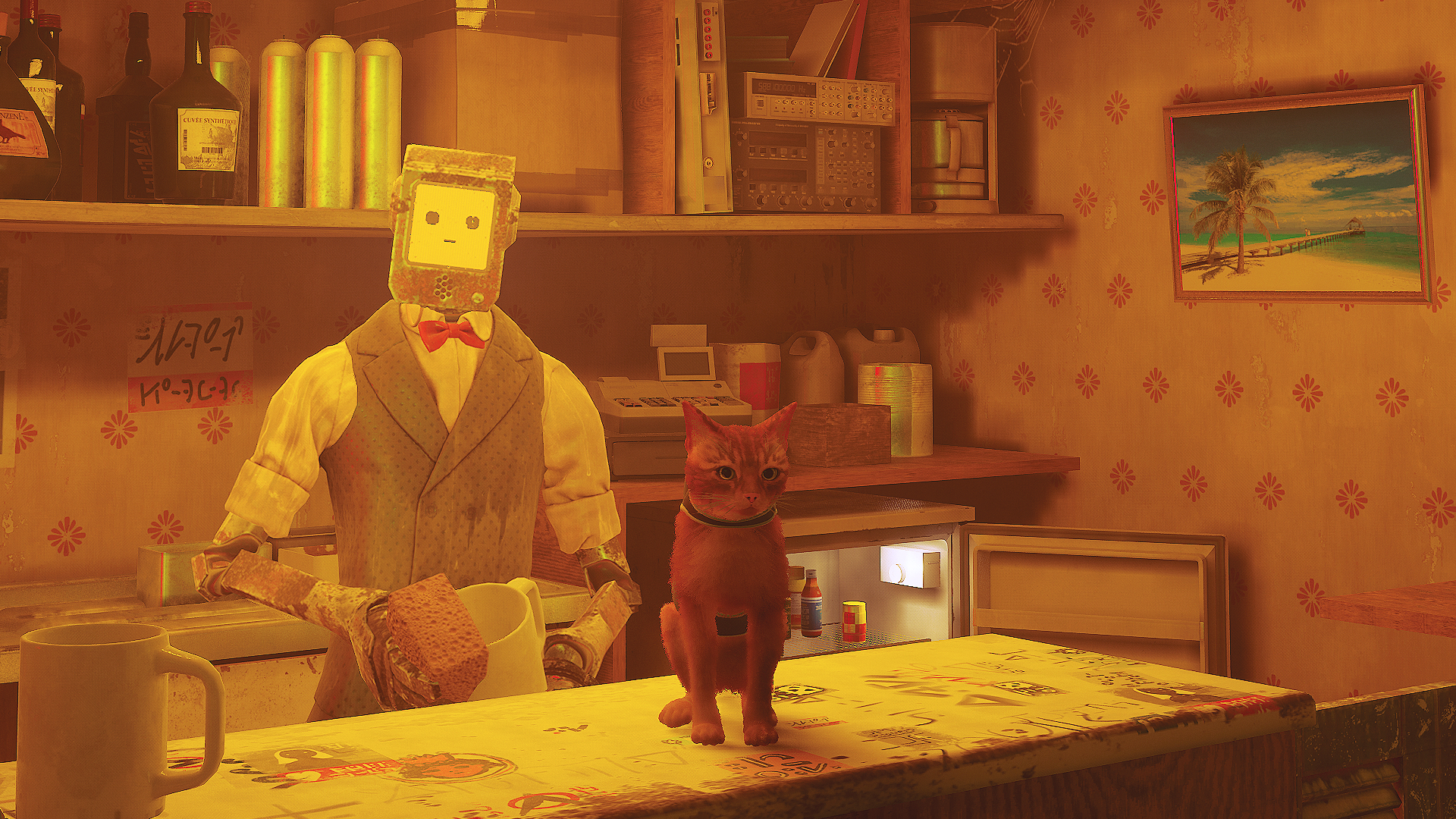The best Stray settings will help you get the most out of the futuristic feline adventure – even if your gaming PC regularly coughs up furballs. While even a graphics card from eight years ago can handle Annapurna Interactive’s cat caper, you might need to improvise to claw back a few frames.
Just like most Steam game options, Stray settings can be tweaked to suit your specific preferences. Whether you’re looking for crisp 4K visuals or to boost fps, there are a bunch of buttons and dials that should help you fulfil your performance ambitions. That said, some settings produce better results than others, and this gorgeous adventure game demands resolution respect.
Stray is also Verified on Steam Deck, so you don’t need to dwell at your gaming desk to become a cyberpunk cat. Just like with a fully-fledged rig, however, you’ll have to balance settings to ensure optimal performance on the portable powerhouse, and our Stray settings guide will hopefully prevent any slideshows.
- Best Stray presets
- Best Stray settings
- Best Stray Steam Deck
- Stray accessibility settings
- Stray brightness settings
PCGamesN test rig: MSI MPG Trident AS 11th gaming PC, featuring an Intel Core i7 11700F, MSI Ventus Nvidia GeForce RTX 3070, 32GB of DDR4 3,200MHz RAM, MSI B560 motherboard, and Windows 11.
Why not download an fps monitor to see if our suggested settings have any affect on your frame rate? That way, you know what you’re doing is making a difference.
Best Stray presets
Rather than Stray presets, BlueTwelve Studio includes four graphics option types within its settings menu. By changing them in tandem, you can effectively emulate the functionality of a preset dropdown, as it only takes a few seconds to toggle everything to low, medium, and high.
Switching your Stray settings to ‘high’ will help fidelity flourish, but doing so will make even the best graphics cards sweat at higher resolutions. However, that’s not to say playing at 4K will necessarily come with frame rate caveats, as we were able to maintain above 60fps using an RTX 3070.
Bumping Stray settings to ‘medium’ will help you claw back some frames, but things will look a little softer as a result. The game’s Blade Runner-inspired playpen still looks incredible, but if you like to zoom into pixels like a scrutinous scientist, you’ll notice a difference.
Stray system requirements suggest the game can run on the GTX 970, a GPU that made its debut back in 2014. While we’d suggest using ‘low’ textures, shadows, effects, and mesh settings as a last resort, doing so might help strike a balance between frame rate and resolution on the ageing GeForce card. It’ll also help things run smoothly on handhelds like the Steam Deck, but we’ll get to that in a little bit.
Best Stray settings
Here are the best Stray settings:
- Resolution scale: 100%
- Max frame rate: Uncapped
- V-Sync: Off
- Motion blur: Off
- Sharpness: Off
- Effects: High
- Shadows: High
- Textures: High
- Mesh: High
The cat game’s settings don’t include a Stray benchmark tool, so our tests use a repeated path that features various types of textures, shadows, and effects. Tweaking all of these options produces substantial fps increases, but it’s important to consider whether or not it’s worth the fidelity dip.
Dialling effects quality down to medium boosts performance significantly, as the game will produce up to 24% more frames than high. You can actually increase the fps ceiling by up to a whopping 30% by switching effects to low, which could make all the difference on a low-spec system.
Scaling back shadow quality is another effective way to bolster frame rate, as opting for medium settings comes with a 16% boost. Unlike with effects, low shadows produce a marginal difference in fps. If you’re not in desperate need of a boost, we’d advise sticking to medium or high.
Surprisingly, toning down texture quality isn’t a frame rate fail-safe, as medium settings only seem to increase fps by around 10%. The same goes for low settings, so if you’re already churning out more than 60fps at your chosen resolution, there’s no need to tinker.
Messing around with mesh effects only boosts fps by around 6% when set to medium. While you can double that figure by switching to low, we’d recommend keeping things set to high. Gazing at Stray’s detailed environment is one of the best things about the game, and changing mess effects only serves to hamper detail.
Best Steam Deck Stray settings
Here are the best Steam Deck stray settings:
- Resolution scale: 80%
- Max frame rate: 45
- V-Sync: On
- Motion blur: Off
- Sharpness: Off
- Effects: Medium
- Shadows: Medium
- Textures: Medium
- Mesh: Medium
Stray is Verified on Steam Deck, and Valve’s performance approval stamp isn’t unwarranted. The portable plays nice with the marvellous mouser adventure, but there are a few things you can do it make it purr.
For starters, you’ll want to dial back your Stray settings on Steam Deck to medium, as the handheld won’t hold up against a conventional desktop PC. The game still looks fantastic on the mini rig, but it can’t quite crank out 60fps.
To achieve a smooth, steady frame rate, we’d recommend capping Stray’s max frame rate at 45fps and setting the Deck’s refresh rate to match. This will help curb spikes and stuttering, and the device’s battery will also thank you for it.
If you’re planning on playing Stray using a Steam Deck dock, you might need to reduce settings further to play at 1080p. If you aren’t a frame rate fuss pot, you could dodge potential performance woes by capping things at 30fps, but it’ll feel more like an Xbox 360 game than something released this year.
Best Stray accessibility settings
Stray doesn’t include a dedicated accessibility settings tab, but there are a couple of options that’ll help players with disabilities and additional needs. PC controller vibration can be switched off, and you can adjust ‘look sensitivity’.
Both of these options live within the Control section of the Stray settings menu, and they’re accompanied by a key rebind tool. In terms of visual aids, there’s an aim reticule that you can toggle on or off in the Gameplay tab, and there are motion blur and gamma sliders in the game’s Graphics settings.
Stray Brightness settings
Adjusting Stray brightness settings is fairly easy, but the option is easily missed within the cat game’s settings. Even if you’re rocking the best gaming monitor around, the brightness levels could make the game harder to see, especially if you’re playing in a bright room.
Here’s how to adjust Stray brightness settings:
- Launch Stray and select settings
- Navigate to the ‘graphics’ tab
- Scroll down and select ‘Gamma’
- Follow the instructions on screen to calibrate brightness
Whether you’re playing on a high-end gaming PC or Valve’s portable powerhouse, the world of Stray is visual catnip. Our Stray review says the tabby cat crusade is “another golden feather in Annapurna Interactive’s cap,” and we can’t wait to see what BlueTwelve Studio gets up to next.
